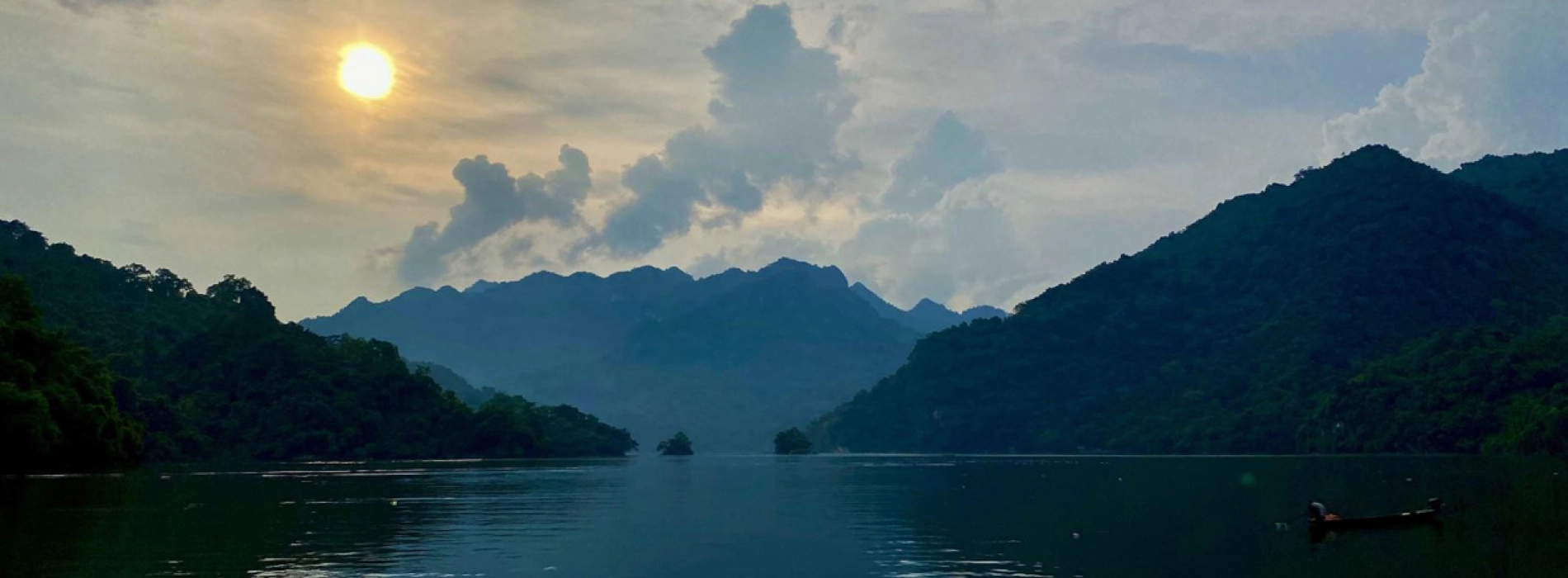Located at the top west of the Shan Plateau, Kalaw is a former hill station with a relaxed atmosphere, a refreshing climate and panoramic views. Many beautiful colonial buildings still standing on the heights and a rail station watch evoke the time spent. It is also known as the Mecca of the Burma trek.
Whether you take a brief walk to soak up the atmosphere and take in views of the hill and the colorful flower-lined streets, or a multi-day trek to Inle Lake or Pindaya to witness the life of the local hill tribes Kalaw offers a wide variety of options for exploration - and unhindered freedom of movement that is not always possible in other remote areas of Burma. This small town is considered the ideal crossroad for those wishing to see locals of the Palaung, Pa O and Danu ethnic groups. These ethnic groups are distinguished by their costumes that they wear as by their languages, their traditions.
At the heart of Kalaw is its colorful and authentic local market, where the inhabitants of the villages and surrounding hills invade the market and alleys with food and flowers. Most of the city's restaurants and food stalls surround the market and offer a particularly eclectic range of foods, with the descendants of Indian and Nepalese railway workers who emigrated here during British rule offering their own dishes in order to complete the Shan's local rate. In the Kalaw and Inle Lake regions, the markets alternate every 5 days and you can not find the markets on the full moon and black moon days of the Burmese Buddhist calendar.
In the center of the city, visitors can also visit the stupa Aung Chang Tha shining with mosaics of silver, glass and gold. And then if you are passionate about the holidays, go to the Tazaunngman full moon party that takes place in late October or early November, and features street parades, music, and fireworks.
Kalaw is a good starting point for many hikes in the surrounding hills and villages where mountain people rub shoulders with the Shan ethnic group.
Short walks and attractions
For those who like short walks, Kalaw is a great place where you can do them easily and independently. For some great views of Kalaw, its market and the surrounding hills, you can head to Thein Taung Pagoda north of Union Highway (the main road through Kalaw) and home to a Buddhist monastery.
A short walk south of the Central Market takes you to Hnee Pagoda where you see an old 500-year-old bamboo Buddha at Shwe U Min Pagoda (Shwe Oo Min Paya), a cave filled with golden Buddhas. Taking these walks you will find reminders of the British colonial era such as the renovated cottages and another kind of religious monument - the Church of King Christ. This is a good example of active Christian worship in Burma, with the popular daily Mass and Sunday services.
An excellent example of Burma's new eco-tourism route is the elephant camp in the green hill valley. A 40-minute taxi ride from Kalaw, the camp aimed to protect the local environment and aging elephant woes, while allowing visitors to see them in their natural habitat. A short elephant ride is allowed but all activities are done mainly with the welfare of the animals.
Longest hikes
For a more immersive experience and really getting a taste of the local life of the Danu, Pa-O, Palaung and Taung Yo ethnic groups, a two- or three-day hike is suitable for you. You will have the chance to enjoy beautiful views of the hills surrounding Kalaw as well as many pagodas and villages of the hill tribes.
If you are passionate about adventure travel, nothing can stop you from taking a long hike between Kalaw and Inle Lake, a multi-day hike through exceptional scenery and many ethnic Pa O villages and Danu is then a real nice experience.
Another fascinating hike, and less affected by tourism, is the trip to Pindaya. It has also become a popular place where many tourists came to the Pindaya caves where thousands of centenarians of Buddha images sit. The images are of various sizes, some carved in the face of the rock and some deposited in niches of the walls. The ancient caves are about a mile southwest of the city, and can be reached by taking a horse cart, or automobile by jeep or just walking along on foot. Since ancient times, it has been places of worship and veneration of images 8,094 buddhas made from various materials such as teak wood, marble, alabaster, brick, cement and lacquer, and all inscribed in the nooks and crannies of sinuous caverns. At the entrance to the main cave of the pagoda is 50 feet tall. This pagoda is called Shwe U-Min Paya or the Golden Cave Pagoda. The tazaung or prayer hall was built by the famous Hermit U Khanti who also built many religious buildings on Mandalay Hill. The total length of the cave is 490 feet. The many stalactites and stalagmites in this limestone cave, whimsical shapes have given rise to names such as the "Fairy Princess Loom". Some of the smaller caves used as meditation rooms are only accessible if you crawl on your knees and elbows. The travellers should plan to stay for one or two nights in Pindaya to explore the natural beauty all around, the tranquil lake, the limestone caves, the pagodas and the old pictures and the beautiful old trees.
